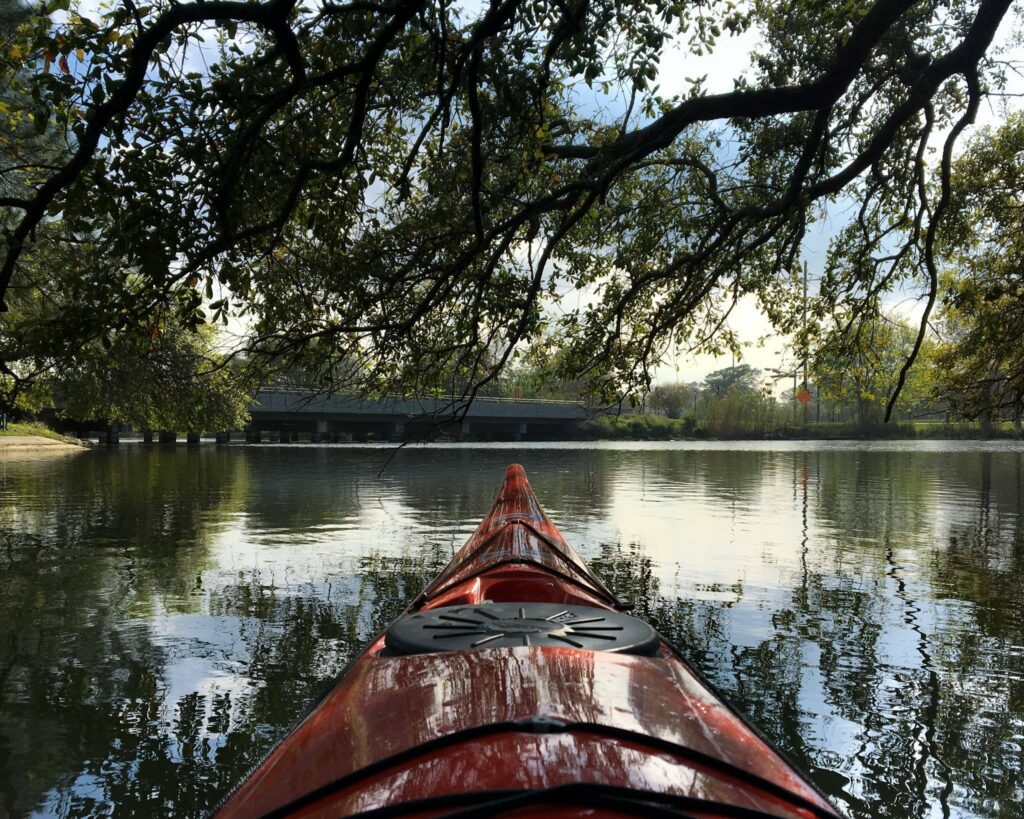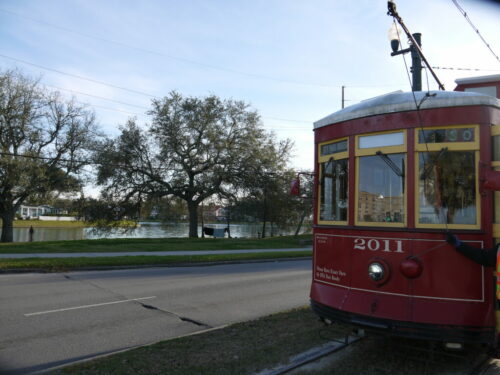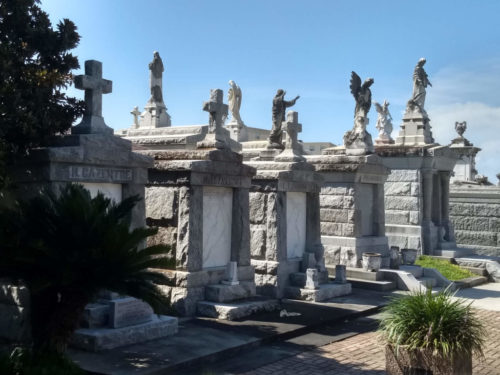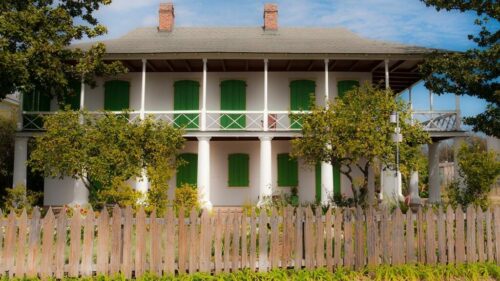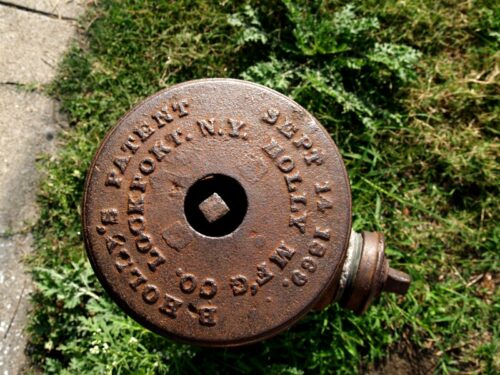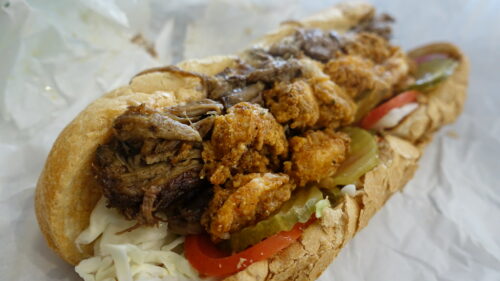Guide to Bayou Saint John in New Orleans
Bayou Saint John is one of the city’s oldest neighborhoods, and there are so many things to do, including a historic cemetery, Water fun, historic mansions, outdoor art, celebrated southern food, and craft cocktails, to name a few. We think there’s lots of reasons to visit Bayou St. John but the main draw might be a visit to one of New Orleans’s famous cemeteries on the only free cemetery tour in the city.
We love The French Quarter, but the Bayou has much more of a neighborhood feel. Bayou Saint John is a beloved neighborhood known for its colorful history, adventure, and fun. The area is the ideal blend of big-city vibes and the closeness of a smaller community. Cool things to do in the Bayou include paddling along the Bayou’s waters, grabbing a po-boy, or taking our free walking tour of the nearby cemeteries.
But what else might there be to do in Bayou Saint John? (hint: there’s a lot).
We’re excited to break down everything to do in the Bayou! If you’re planning to visit St. Louis #3, brush up on your cemetery etiquette and get ready to Let the Good Times Roll.
Historically, the Bayou has always been connected to The French Quarter by way of Esplanade ave. Esplanade is built on a ridge several feet above sea level that indigenous people used as a portage as part of their trading route. In 1701 French colonizers built a small fort near the Lake Pontchartrain area of the Bayou, as it was a critical trade route. Waterways were the only option for transporting goods and people, and Bayou Saint John in particular, was a quicker route into the area from The Gulf of Mexico. So it was at one point extended all the way to the back of the French Quarter. This was filled in in the mid 20th century. Marie Laveau was said to use this area for elaborate voodoo rituals in the 19th century. The Magnolia Bridge (locals call it Cabrini Bridge) over the Bayou is still the site of group rituals every St. John’s Eve.
n the Southern US, a bayou is a small body of water usually found in a low-lying area. Sometimes these include a slow-moving stream, river, marsh, wetland, or creek.
Bayou St. John is close to the French Quarter. To get to the Bayou St. John from The French Quarter, drive up Esplanade Avenue about 20 blocks or about 2 miles. If you don’t have a vehicle, order a Lyft or Uber.
Besides ride share, you can take public transportation, either a bus or the lovely Canal Streetcar-
Canal Streetcar (City Park)
Hop aboard one of the bright-red Canal Streetcars! With access to City Park and New Orleans’ famous above-ground cemeteries, using the streetcar is a scenic and inexpensive way to get to Bayou Saint John. Be sure to take the street car labeled “City Park”
Note: The streetcar is cash only, $1.75 each way or $3 for a day pass. They are a leisurely form of travel so be sure to give yourself extra time
Esplanade Bus
There is a bus route all the way from The French Quarter to the Bayou. Jump on the 91 bus that rolls down Esplanade.
For more info check out the RTA’s website (they run the buses and streetcars). They now have an app to make taking public transportation much easier!
Bayou Saint John is a great way to break away from the crowds of The French Quarter. Come to the Bayou when you want a relaxed picnic, serene sunset, or scenic place to walk or jog and play with your pets and kids. Rent a kayak or paddleboard for a more adventurous day on the water.
The number one reason visitors go to Bayou St. John is to see the famous cemetery, New Orlean’s St. Louis #3. One of NOLA’s unique cities of the dead, St Louis Cemetery #3 dates back to 1852. It was constructed during a Yellow Fever epidemic as bodies where pilling up outside o St Louis #1. It is filled with above-ground tombs, unique architecture, and history found nowhere else in the world. There are many reasons to take a guided tour of the cemetery.
Note: If you’d like to explore at your own pace, consider our self-guided tour of St. Louis #3.
The romantic remains of a grand Italianate home, the Lulling Mansion, stands guard over Esplanade Ridge. Designed by famed New Orleans architect James Gallier Jr. whose father is laid to rest in the nearby St Louis #3 Cemetery. The Lulling mansion is lavish and striking, in classic New Orleans style, this 3-story beauty is worth a quick photo. Today it’s an apartment building for a handful of lucky folks who get to call it home.
On Moss Street, nearby the Lulling Mansion, is a whole long stretch of photo-worthy estates. Including the Pitot House , one of the only houses in its style remaining in Louisiana. The Pitot House and its gardens are available for educational tours. Which we recommend, it’s not often you get to see the inside of a house built in 1799!
Further down Moss at 1300 Moss St you can check out the Spanish Custom House. This privately own home was built around 1794!
This bridge (called Cabrini Bridge by locals) was constructed in the late 19th century when Bayou St. John was still a commercial waterway connecting Lake Pontchartrain and the Gulf of Mexico to the French Quarter. Originally it swung to the side with a hand crank to allow larger boats to pass. It was restored in the 1990s and today it’s a popular picnic spot with locals. We think it’s an excellent place to take a date, what’s more romantic than an old bridge over a Bayou?
We LOVE this modern sculpture garden that spreads over 11 acres of City Park! The Sydney and Walda Besthoff Sculpture Garden is an extension of the New Orleans Modern Art Museum, so take lots of pics and care when exploring.
Note: Although the sculpture garden is free, donations are appreciated.
Easy to miss is the city’s oldest fire hydrant. Born in 1869, this fire hydrant represents a major turning point in fire hydrant technology, and this model was later replicated around the world. Find this little brass piece of history at the corner of Grand Route St. John and Moss Street. Want to know more weird and wonderful things to do in New Orleans? Check out our guide!
All that walking around probably has made you hungry and thirsty, check out our guide to Where to Eat and Drink in Bayou St. John.
Cocktails are always a good idea! The Bayou’s local cocktail bar, Pal’s Lounge, is where locals go to sip drinks at reasonable prices. This little lounge is an absolute gem, known for its friendly service, house made mixers, and welcoming atmosphere. Pal’s is too cool for a website you can use the map to find the Pal’s.
Pop in for a classic po-boy at Parkway Bakery and Tavern, serving the Bayou Saint John neighborhood since 1911. We recommend roast beef or shrimp po-boy for first-timers, followed by a serving of rum cake.
Note: Parkway’s is a NOLA icon, and there is almost always a wait. We promise it’s worth it!
Another great place to get a Po-Boy is Liuzza’s by the Track. This bar and restaurant is in a historic 1930s era building. They have a full menu here with all the New Orleans classics
If your look for something a little healthier and or veg friendly check out 1000 figs They offer a unique spin on Mediterranean food. We can’t get enough of their falafel!

